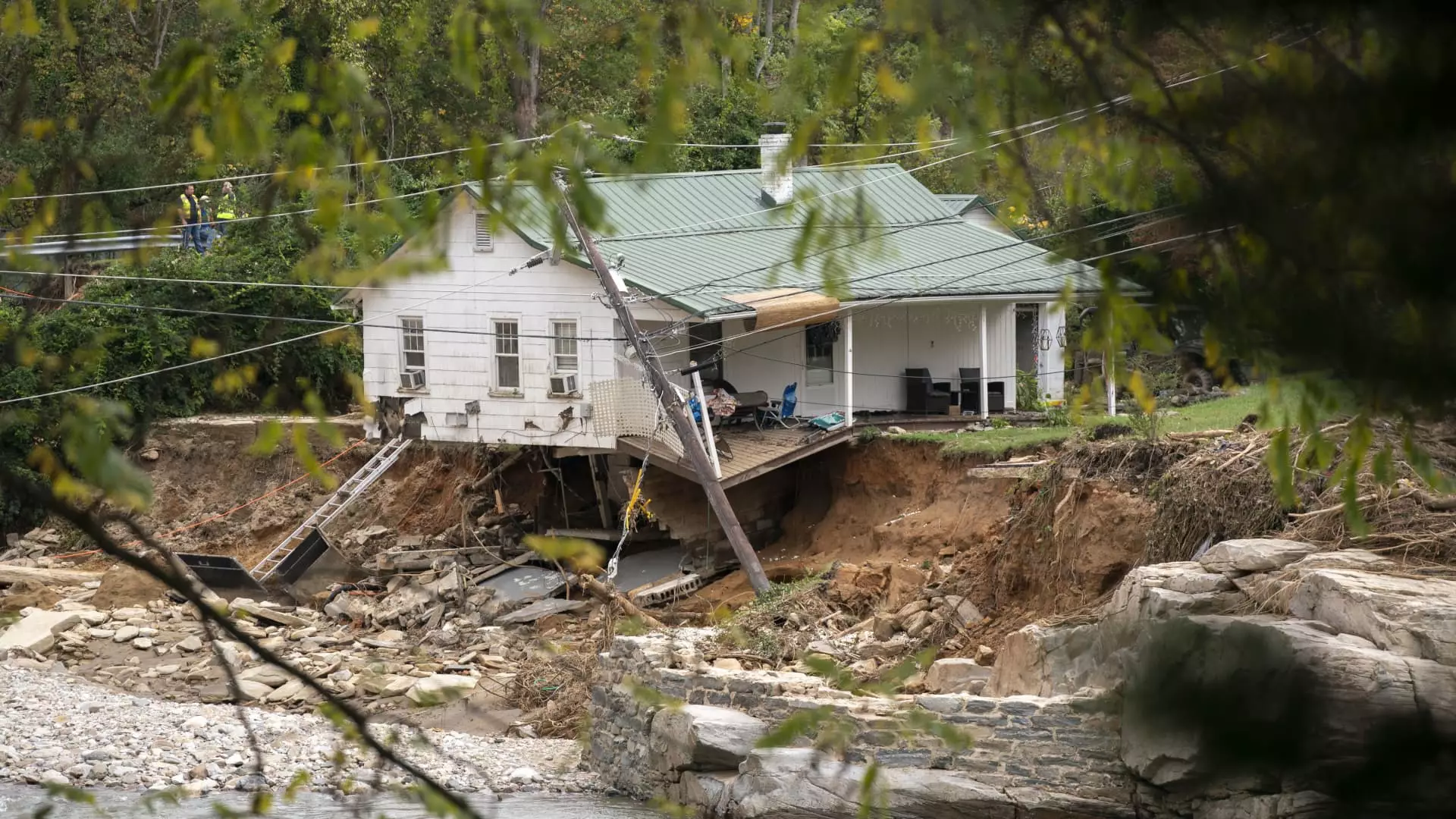The aftermath of Hurricane Helene exposes profound vulnerabilities within the housing market related to uninsured properties and climate risks. With estimated insured losses exceeding $6 billion, the scale of damage underscores a growing crisis: the vast majority of affected homeowners in North Carolina lacked flood insurance. These realities have sparked a reevaluation of risk assessment methodologies that not only aim to protect homebuyers but also attempt to educate them on the hidden perils of climate change.
The Disconnect Between Perception and Reality
A significant contributor to the high rate of uninsured homes is the misconception surrounding Federal Emergency Management Agency (FEMA) flood zones. In North Carolina, a mere 4% of residences lie within these designated areas, leading homeowners to erroneously believe they are immune to flooding risks. This misjudgment has proven catastrophic, especially as climate change exacerbates weather events, increasing the likelihood of severe rainfall even during moderate storms. As outlined by experts at First Street, a climate risk firm that integrates these viscerally consequential factors into property evaluations, a reassessment of flood risk is crucial for understanding the real threat to homes.
This unfortunate situation has precipitated a crucial shift in the home buying landscape. Recently, First Street unveiled a suite of climate risk data for properties on Zillow, aiming to empower both buyers and sellers with transparent, property-specific information related to climate vulnerabilities. As explained by Zillow’s chief economist, Skylar Olsen, this innovative tool serves as a substantial advancement for the real estate market, offering risk scores for flooding, heat, wildfires, and more. This integration provides a holistic view of a property’s climate-associated challenges over the short and long term—inclusive of assessments that predictions for the next 15 and 30 years.
With over 80% of potential homebuyers now considering climate risks in their purchasing decisions, it is evident that consumer awareness is evolving. Flood risk emerged as the principal concern, further emphasizing the urgency for homeowners to understand their insurance needs adequately. Providing prospective buyers with this vital information illustrates a growing recognition that climate change cannot be ignored, regardless of FEMA designations. Ed Kearns, chief science officer at First Street, emphasizes that just because a home is outside of a designated flood zone does not mean it is safe from inundation.
As climate concerns become increasingly central to home value assessments, we can expect a noteworthy impact on real estate markets across the United States. Zillow’s analysis has revealed that listings showcasing climate risks have increased markedly in quantity—an alarming trend as 16.7% of new homes show major wildfire risks, and 12.8% exhibit significant flood risks. This shift not only signifies changing buyer priorities but also portends potential drops in property values for homes situated within high-risk zones. As insurance costs rise in accordance with these risks, home prices may experience a corresponding decline, particularly in areas where climate threats are pronounced.
The Bottom Line: Adapting to a New Reality
In the wake of Hurricane Helene, we must acknowledge that our traditional approaches to homeownership and risk assessment are antiquated. A confluence of increased climate threats and a lack of awareness about the true nature of flood risks will push homeowners and prospective buyers alike to advocate for more reliable data and transparency. Ultimately, as the real estate market adapts to these new realities, informed decision-making and proactive measures toward climate preparedness will become imperative. The integration of sophisticated risk data into property listings is a promising first step, but ongoing education and adaptation will be key in navigating the challenges posed by an ever-changing climate landscape.

